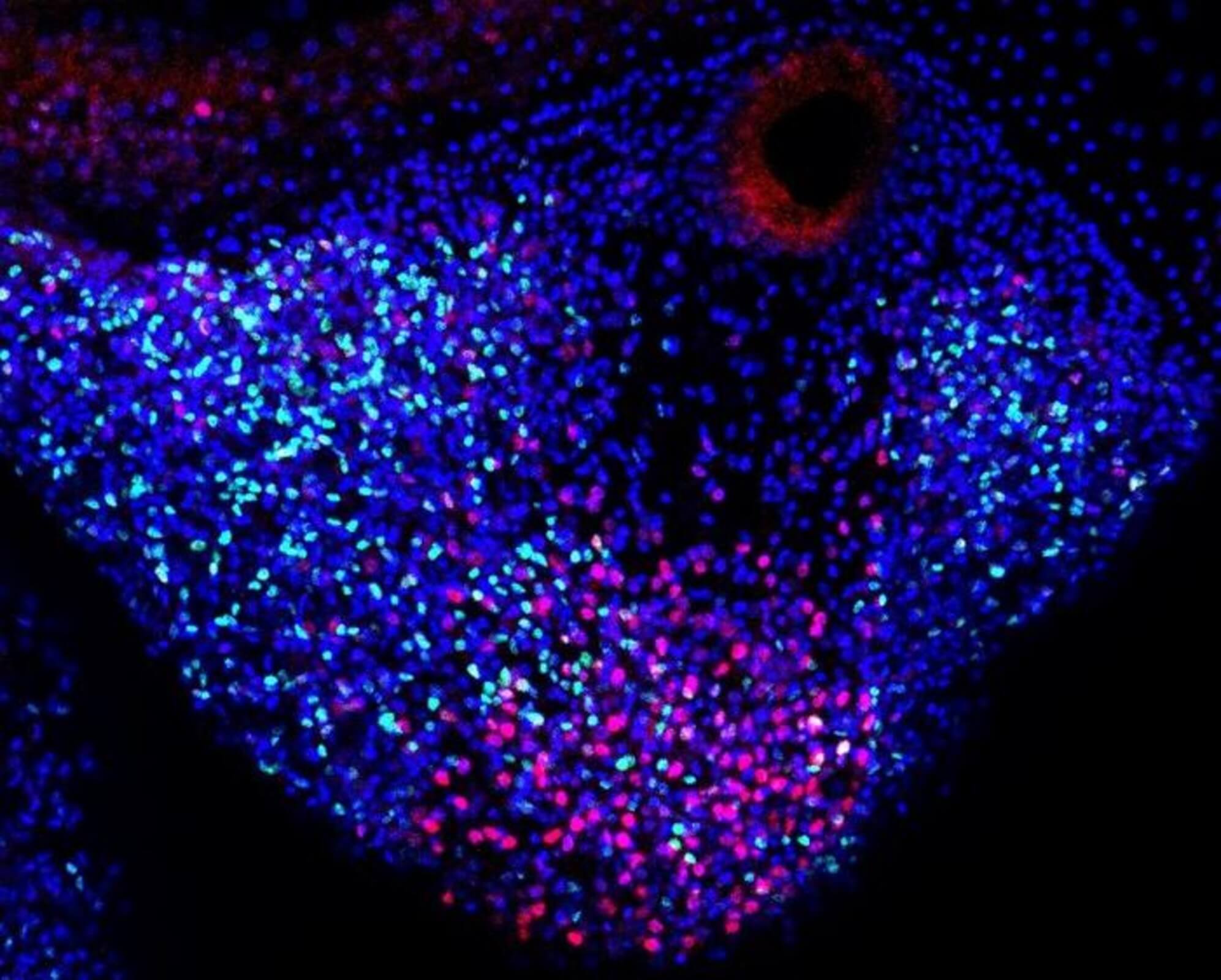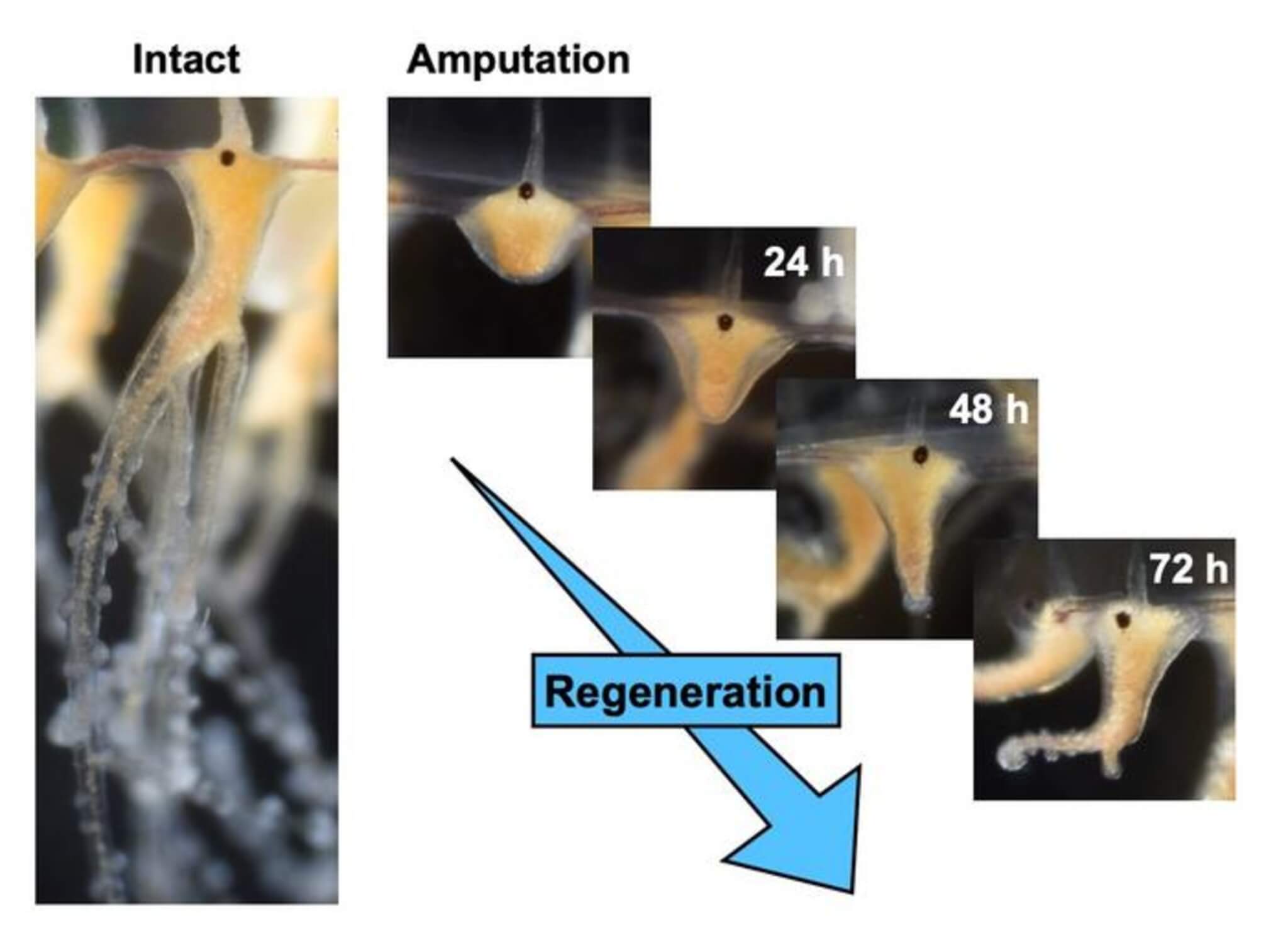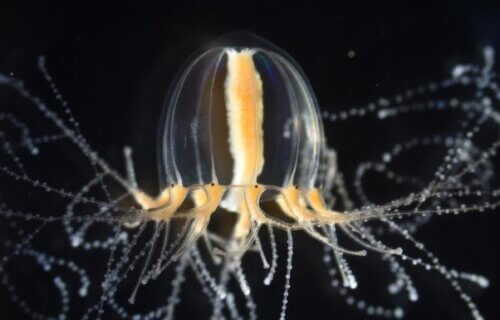TOKYO, Japan — A question that has stumped scientists for years has finally been solved: how do jellyfish grow new tentacles so quickly after losing them? Researchers from the University of Tokyo discovered that stem-like proliferative cells, which are actively growing and dividing but have not yet specialized, emerge at the injury site to help form the blastema. This finding adds a significant piece to the puzzle of regenerative biology.
Tissue regeneration in animals like salamanders and insects involves forming a blastema, a mass of undifferentiated cells that can grow into a new appendage. This process is well-documented, but until now, how jellyfish, along with other cnidarians such as corals and sea anemones, achieve this feat was unknown.
“Importantly, these stem-like proliferative cells in blastema are different from the resident stem cells localized in the tentacle,” says study corresponding author Yuichiro Nakajima, a lecturer in the Graduate School of Pharmaceutical Sciences at the University of Tokyo, in a media release. “Repair-specific proliferative cells mainly contribute to the epithelium — the thin outer layer — of the newly formed tentacle.”

Resident stem cells in jellyfish tentacles are responsible for producing various cell types during the organism’s life, both in maintaining normal function and in regeneration. However, repair-specific proliferative cells appear only when injury occurs.
“Together, resident stem cells and repair-specific proliferative cells allow rapid regeneration of the functional tentacle within a few days,” notes Nakajima, adding that jellyfish use their tentacles to hunt and feed.
“In this study, our aim was to address the mechanism of blastema formation, using the tentacle of cnidarian jellyfish Cladonema as a regenerative model in non-bilaterians, or animals that do not form bilaterally — or left-right — during embryonic development,” adds study first author Sosuke Fujita, a postdoctoral researcher at the University of Tokyo’s Graduate School of Pharmaceutical Sciences.
Scientists suggest that the formation of a blastema through repair-specific proliferative cells is a common evolutionary feature for complex organ and appendage regeneration across different animal groups.

The origin of these repair-specific proliferative cells in the jellyfish’s blastema remains a mystery. Current tools for investigating cell origins are limited, preventing researchers from pinpointing the exact source of these cells or identifying other similar stem-like cells.
Nakajima emphasized the need for advanced genetic tools to trace specific cell lineages and manipulate them in Cladonema.
“Ultimately, understanding blastema formation mechanisms in regenerative animals, including jellyfish, may help us identify cellular and molecular components that improve our own regenerative abilities,” concludes Cladonema.
The study is published in the journal PLoS Biology.
You might also be interested in:
- ‘Love hormone’ oxytocin could help reverse damage from heart attacks via cell regeneration
- Scientists solve mystery of how lizards regenerate their tails — The answer may cure arthritis
- This poisonous jellyfish is smarter than you think and even learns from its mistakes

